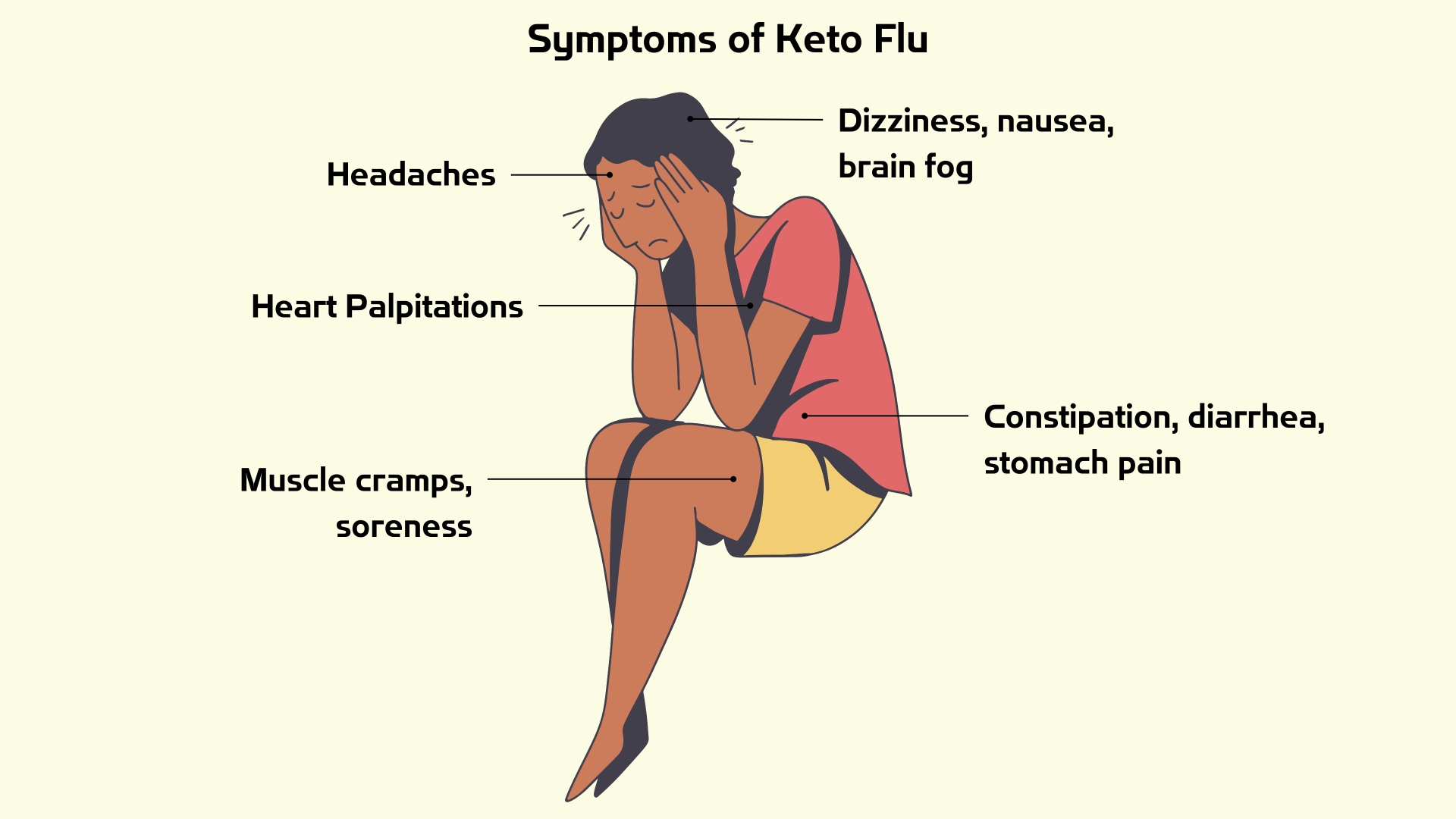The Lamen
What is keto flu and how do you get rid of it?

The keto flu is a sign of adaptation — showing that your body is switching over from carbs to fats as its primary source of energy. This transitory period, however, can cause some temporary flu-like symptoms.
Illustration: The Lamen
Benefits of the ketogenic diet start to set in only after a period of dizziness, headaches, and nausea — known as the “keto flu.” The condition describes a herd of symptoms that some people experience early into the keto diet.
Common symptoms of keto flu include:
- nausea
- headache
- dizziness
- vomiting
- constipation
- diarrhea
- stomach pain
- weakness
- heart palpitations
- muscle cramps or soreness
- sleep disturbances
- lack of focus or “brain fog”
These symptoms can often be confused with influenza or the flu. Typically occurring 2-3 days following the initiation of the ketogenic diet, the keto flu can last anywhere from a few days to several weeks.
What causes the keto flu?
A ketogenic diet maintains the body in a state of nutritional ketosis, characterized by the presence of acetone, acetoacetate, and beta-hydroxybutyrate molecules, collectively called ketone bodies — formed by the breakdown of fats.
- Your brain and other organs regularly use these ketone bodies as an alternative energy source during periods of fasting.
- As your body switches from carbs to fats, it can experience withdrawal-like symptoms as with the keto flu.
Often a phase of adaptation, keto flu can be caused due to:
- The dehydration that occurs due to the initial water loss during the ketogenic diet can exacerbate headaches and fatigue.
- The switch from glucose to ketones can temporarily affect brain function, causing brain fog, irritability, or lack of focus.
- Electrolyte imbalance often occurs due to the rapid loss of sodium, magnesium, and potassium during ketosis. This can result in lethargy and muscle cramps.
Symptoms of keto flu may cause many people to prematurely give up the ketogenic diet, or even be misdiagnosed. Your body builds more mitochondria and ketone-producing enzymes during this transitory phase. Meanwhile, your gut adapts to digest fats more efficiently.
Home remedies and prevention
Staying hydrated, supplementing with electrolytes, moderate-intensity exercise, and reducing caffeine intake are all known to help with the symptoms of keto flu.
The Keto Diet podcast host and author of the best-selling book of the same name, Leanne Vogel, highlights some common mistakes that may cause these side effects:
- not getting enough electrolytes
- not eating enough leafy greens
- not exercising enough
- not eating enough
- eating too few carbs
- forcing your body to fast
Sticking to the diet for long enough typically makes the undesirable side effects go away. However, if your symptoms persist, you might consider switching to the Mediterranean or DASH diet — each supported by evidence of prolonging life and reducing the risk of chronic health conditions.